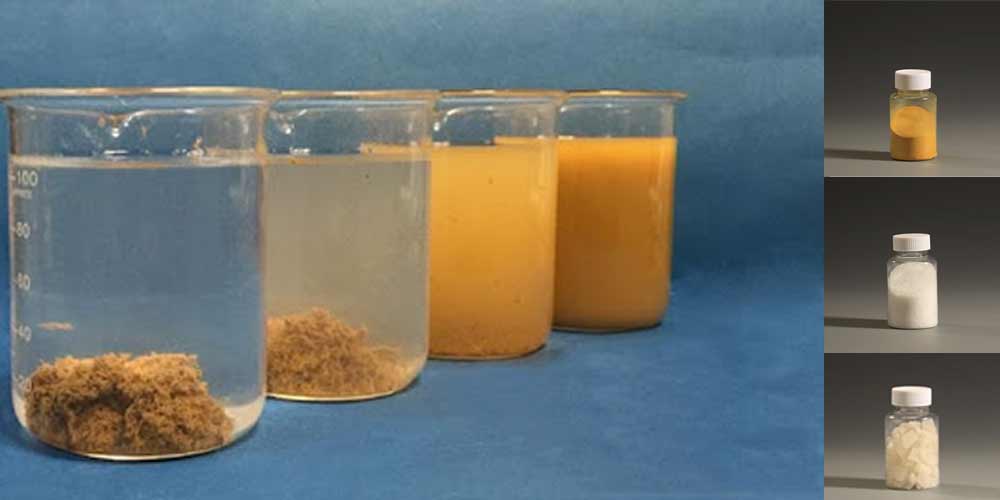Flocculantsua lub luag haujlwm tseem ceeb hauv kev kho dej los ntawm kev pab tshem tawm cov khoom tshem tawm thiab cov colloids los ntawm dej. Cov txheej txheem cuam tshuam nrog kev tsim cov flocs loj dua uas tuaj yeem khom lossis tshem tau yooj yim dua los ntawm kev pom. Nov yog li cas flocculants ua haujlwm hauv kev kho dej:
Flocculants yog cov tshuaj ntxiv rau hauv dej los pab txhawb kev sib sau ntawm cov khoom me me, tsis ruaj khov rau hauv qhov loj dua, tshem tau yooj yim hu ua flocs.
Feem ntau hom flocculants muaj xws li inorganic coagulants zoo liPolymeric Aluminium Chloride(PAC) thiab ferric chloride, nrog rau cov organic polymeric flocculants uas tuaj yeem ua cov khoom siv hluavtaws xws li polyacrylamide lossis cov khoom ntuj xws li chitosan.
Ua ntej flocculation, ib coagulant yuav muab ntxiv rau destabilize colloidal hais. Coagulants neutralize cov nqi hluav taws xob ntawm cov khoom, cia lawv los ua ke.
Cov coagulants muaj xws li polymeric aluminium chloride, aluminium sulfate (alum) thiab ferric chloride.
Flocculation:
Flocculants ntxiv tom qab coagulation los txhawb kev tsim cov flocs loj.
Cov tshuaj no cuam tshuam nrog cov khoom tsis ruaj khov, ua rau lawv tuaj yeem ua ke thiab ua kom sai dua, pom cov sib sau ua ke.
Floc Tsim:
Cov txheej txheem flocculation ua rau muaj kev tsim cov flocs loj thiab hnyav dua uas nyob ntawm qhov nrawm dua vim muaj qhov hnyav ntxiv.
Floc tsim kuj pab rau hauv kev nkag mus ntawm impurities, suav nrog cov khib nyiab tshem tawm, kab mob, thiab lwm yam kab mob.
Kev Txiav Txim thiab Kev Tshaj Tawm:
Thaum cov flocs tau tsim, cov dej tau tso cai nyob rau hauv ib lub phiab sedimentation.
Thaum cog, flocs nyob rau hauv qab, tawm hauv dej ntshiab saum toj no.
Lim:
Rau kev ua kom huv ntxiv, cov dej ntshiab yuav raug pom kom tshem tawm cov khoom seem uas tsis tau daws.
Tshuaj tua kab mob:
Tom qab flocculation, daws, thiab pom, cov dej feem ntau yog kho nrog cov tshuaj tua kab mob xws li tshuaj chlorine kom tshem tawm cov kab mob uas tseem tshuav thiab ua kom dej nyab xeeb.
Hauv cov ntsiab lus, flocculants ua haujlwm los ntawm kev ua haujlwm nruab nrab ntawm cov khoom raug tshem tawm, txhawb kev sib sau ntawm cov khoom me me, tsim cov flocs loj dua uas tuaj yeem tshem tau yooj yim, ua rau cov dej ntshiab thiab huv.
Post lub sij hawm: Mar-01-2024


